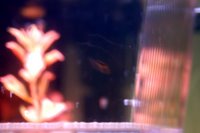Up and Down

This is an important week. I have a self-imposed deadline to notify my current employer of my final decision about Australia by Friday. On Monday my good friend and Chair of the department pulled out all the stops to try to get me to stay. But the following day, in a rebuttal of sorts to those persuasive attempts, a senior colleague told me a version of events he had heard about why I am leaving, which included a load of crap that stirred up all sorts of lousy memories of the past seven years. Meanwhile, my mother-in-law has been visiting from England. I had to make a very early morning trip to the airport so that she could fly to Jamaica...twice. She missed her first flight on Tuesday so I had to roll out of bed the next day at 4:30 to try again. She will be coming back to Atlanta in two weeks. Yesterday I spent three hours getting our application for our permanent residency visas ready and sent it off by Global Express. In addition, a moving company came to the house to give an official estimate for The Big Move we plan to make in a month. So far this week we have had one viewing of the house by a potential buyer that probably lasted 5 minutes tops! But, we did receive some very good news this week... our temporary visas were approved on Monday night, so that means we can start working once we have landed.
As things get finalized (or "finalised," as they spell it Down Under!), the bouts of anxiety, sadness, and regret have become more frequent. Fortunately, we found a great website about Australian tourism that has a wonderful (but controversial) ad called "So Where the Bloody Hell Are You?" Both Vikki and I are finding it to be the perfect booster shot for morale...











